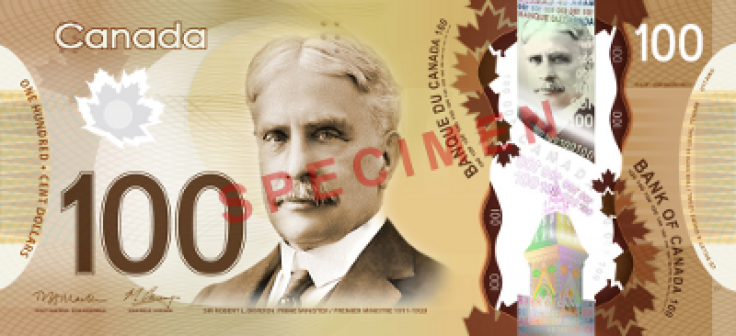Sweet Smell Of Success: Do New Canadian $100 Bills Carry The Scent Of Maple Syrup?

The maple leaf may be the treasured symbol of their country, but now some Canadians think that their new $100 bills have the unmistakable scent of maple syrup.
According to reports in Canadian and British media, dozens of puzzled Canadians have asked the Bank of Canada since November 2011 what the deal is with this sweet-smelling currency?
The Canadian Press news agency reports the following email query was typical from the bewildered public: "I would like to know ... once and for all if these bills are, in fact, scented, as I do detect a hint of maple when smelling the bill."
Another person wrote to the bank: "[The bills] all have a scent, which I'd describe as maple. Please advise if this is normal."
Yet another Canadian with heightened olfactory senses wrote: "Everyone I asked who's smelt the bills agree they smell like maple. So, did the bank purposely scent them maple? Or is it just a coincidence?"
In response, bank official Jeremy Harrison has denied that they have in any way imbued the new notes, which are now made of polymers, with any fragrance whatsoever, the Press states.
This is not the only controversy that has arisen over Canadian currency. In the past, some residents have complained that the maple leaf printed on the dollars were not of the Canadian variety, but rather typical of maples found in Norway (an invasive species to Canada). The bank also denied that accusation, the Daily Telegraph reports.
The Bank of Canada recently replaced paper currency with polymers in order to reduce the likelihood of counterfeiting. They bills are also reportedly more durable than the old “loonie” dollars.
© Copyright IBTimes 2024. All rights reserved.











